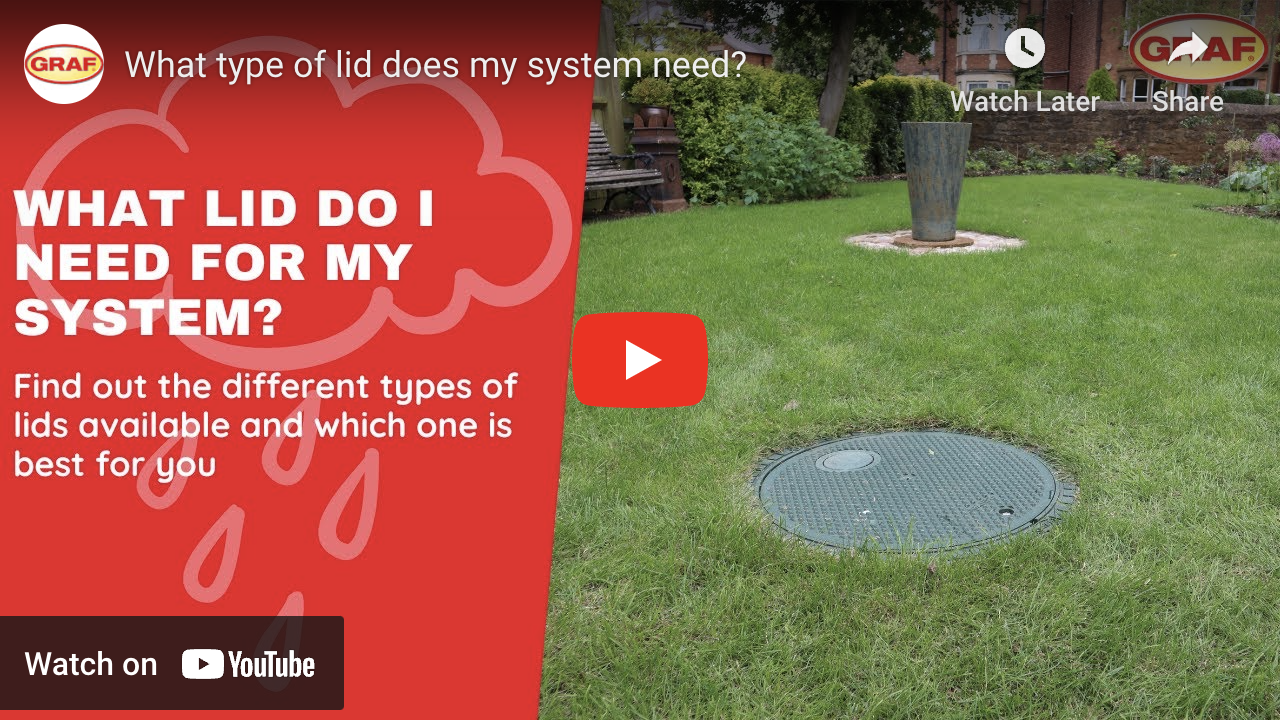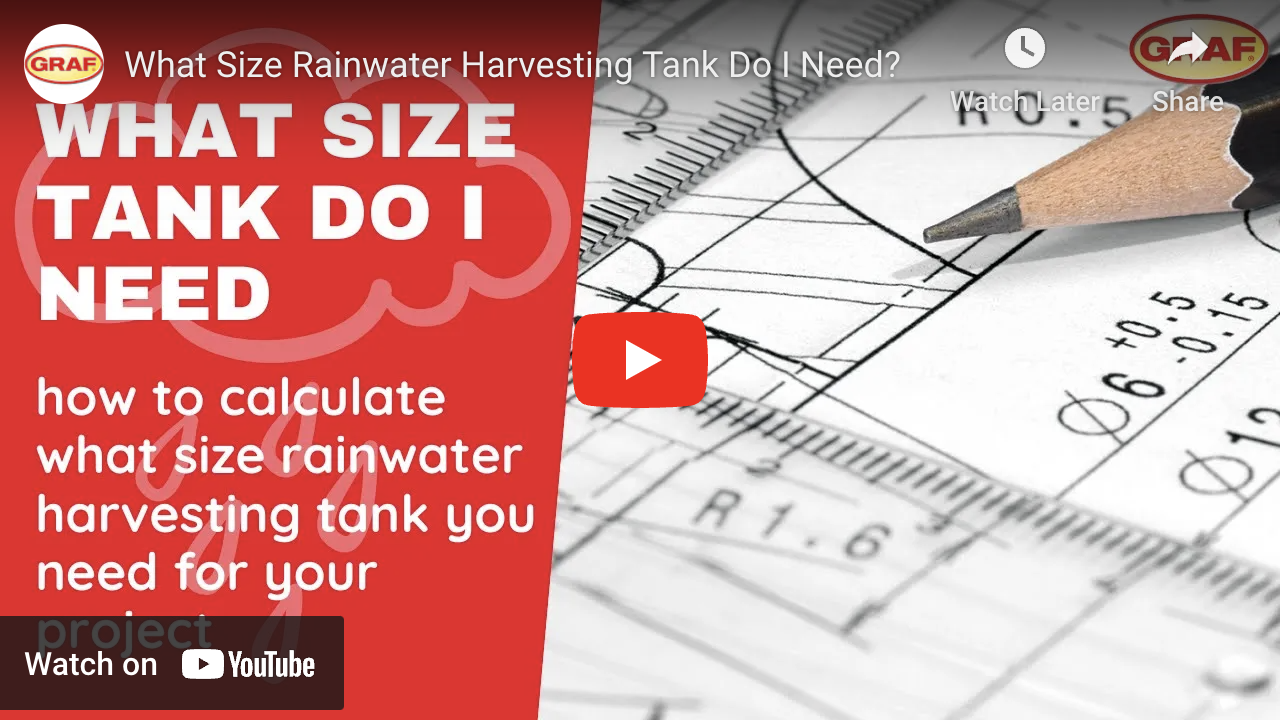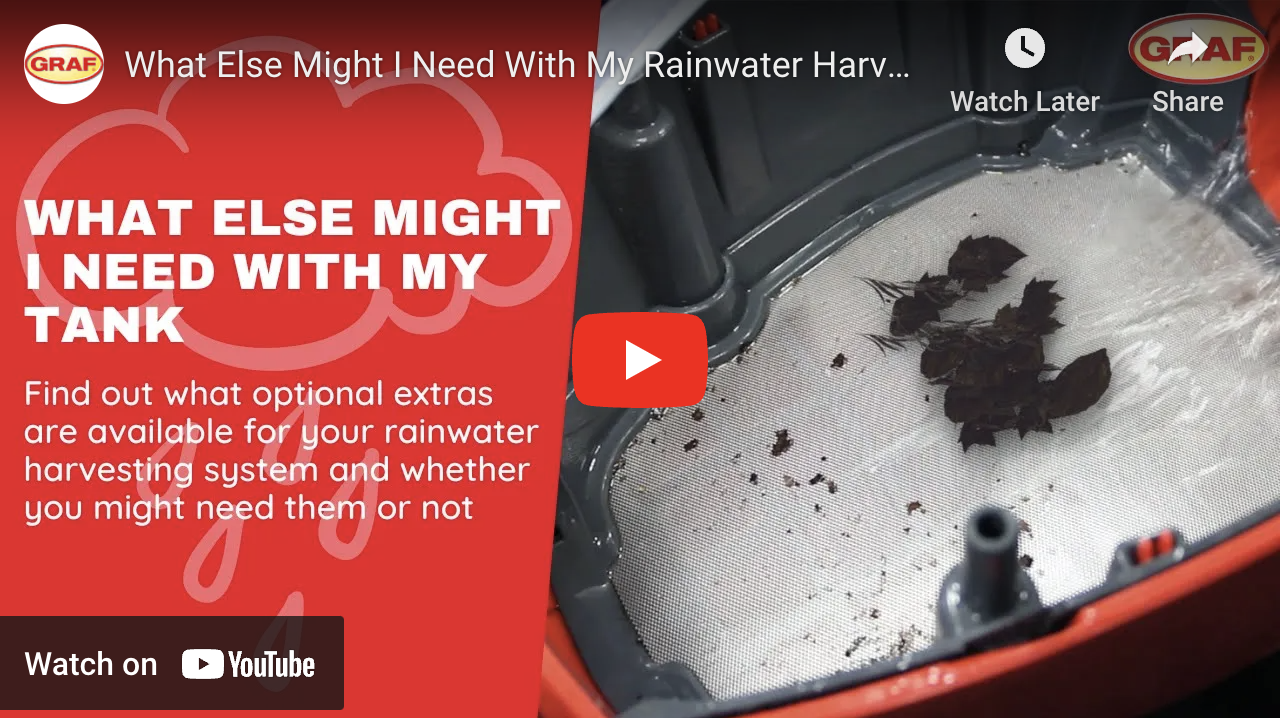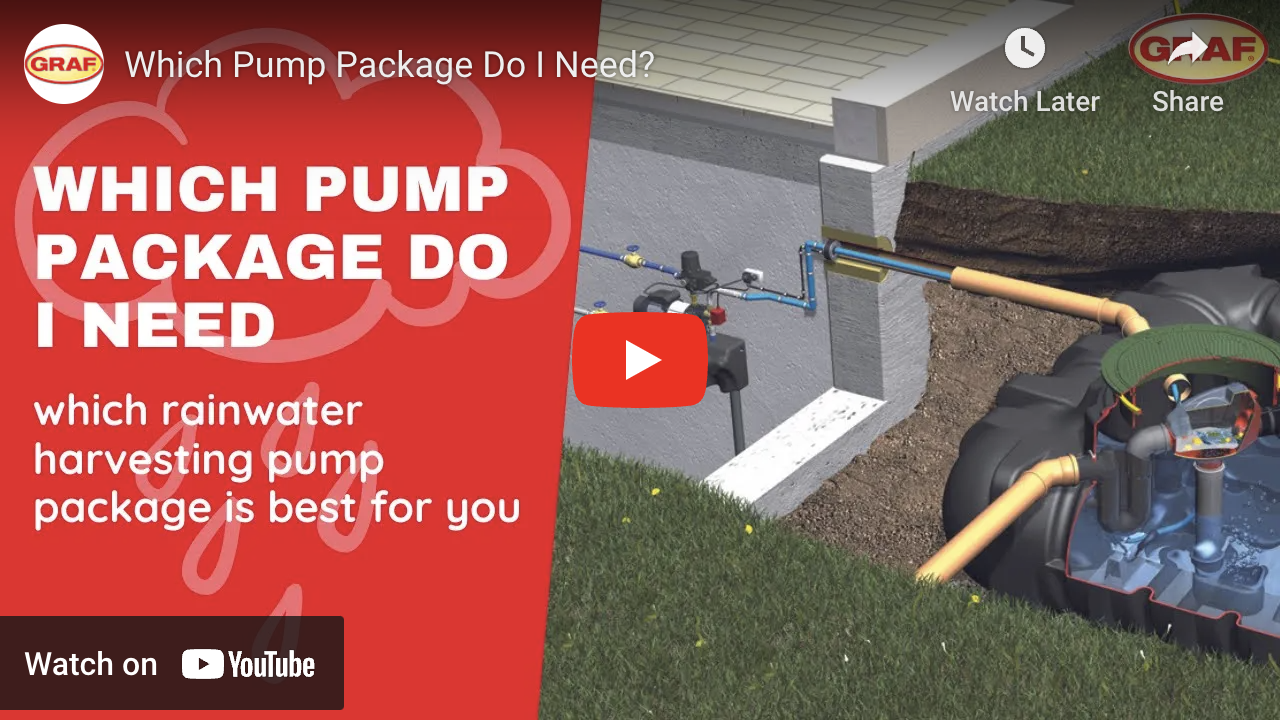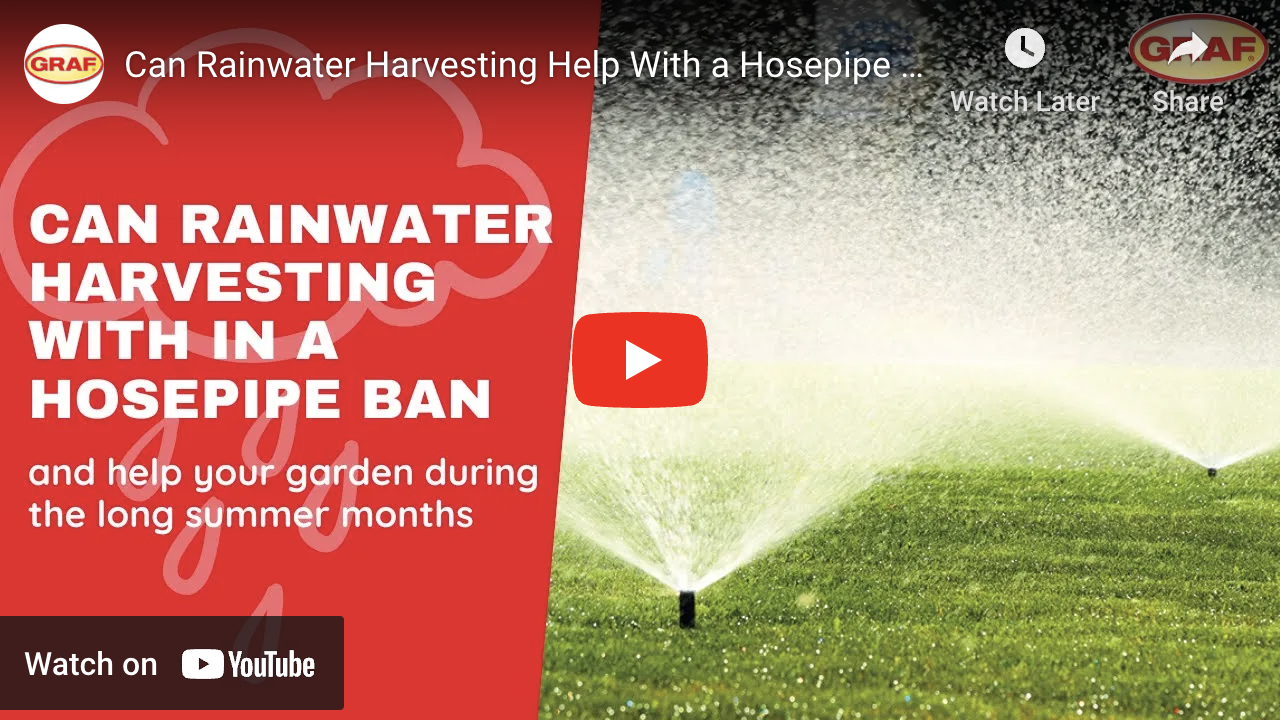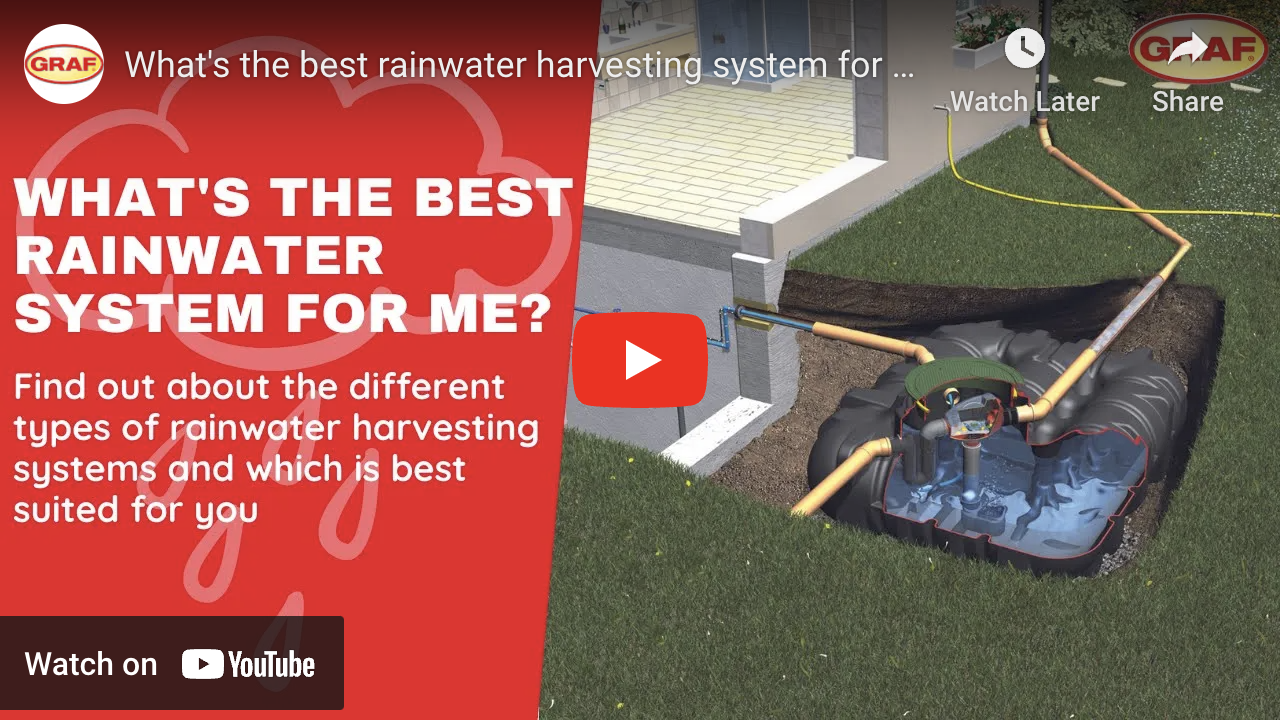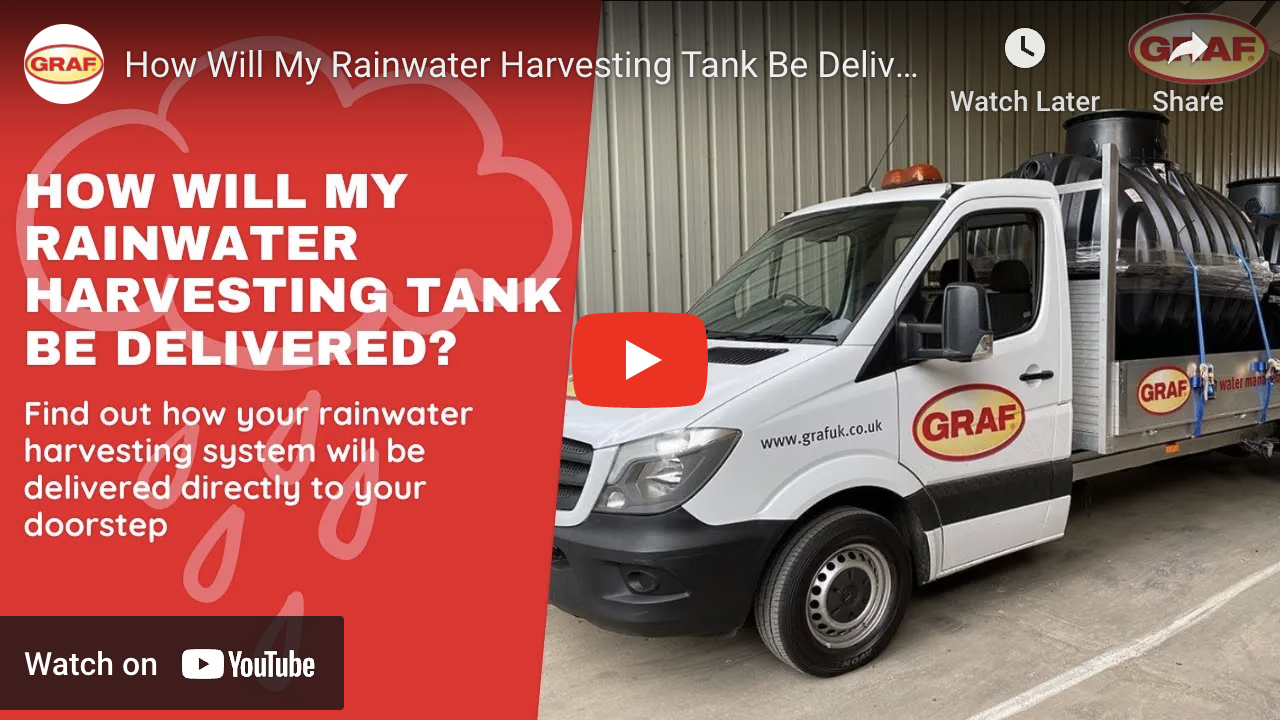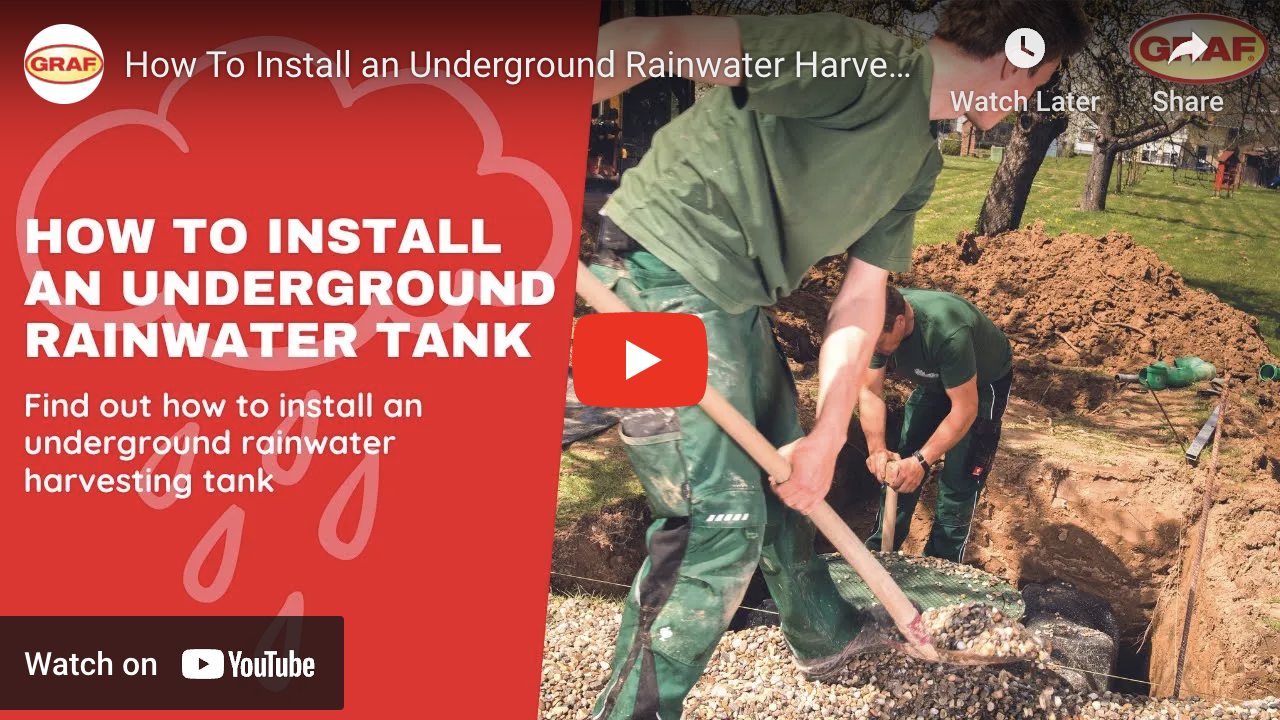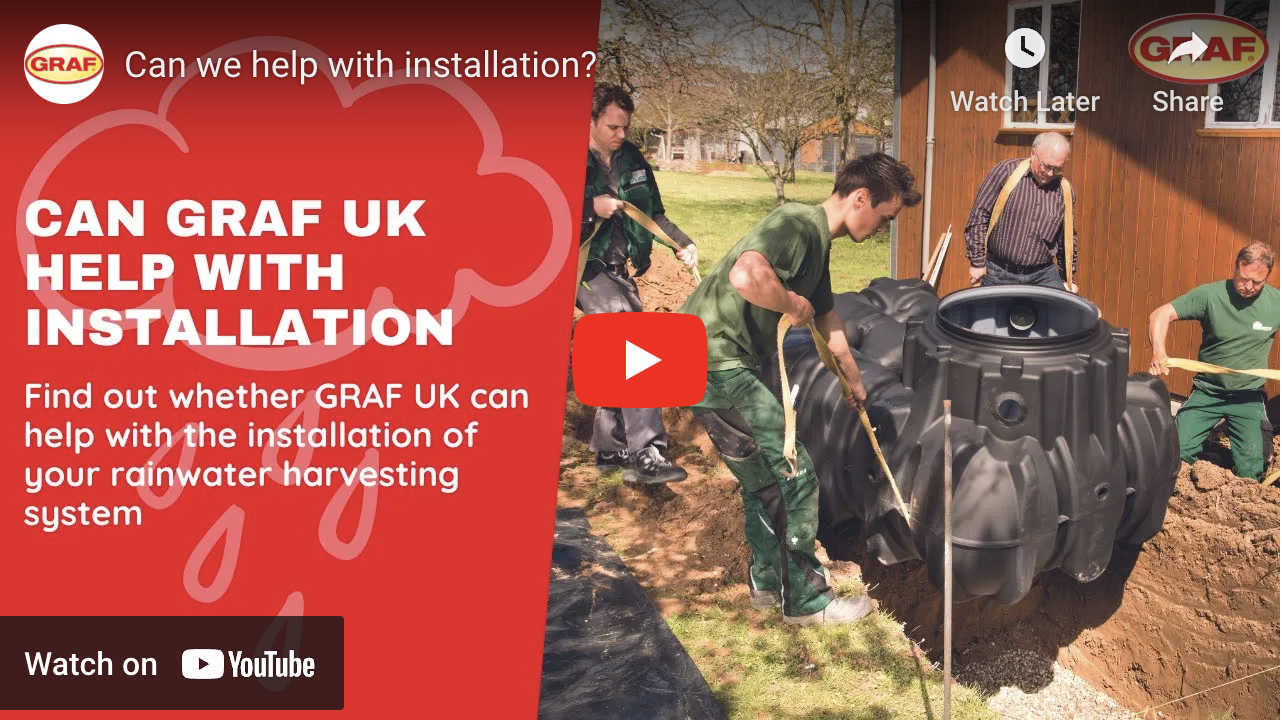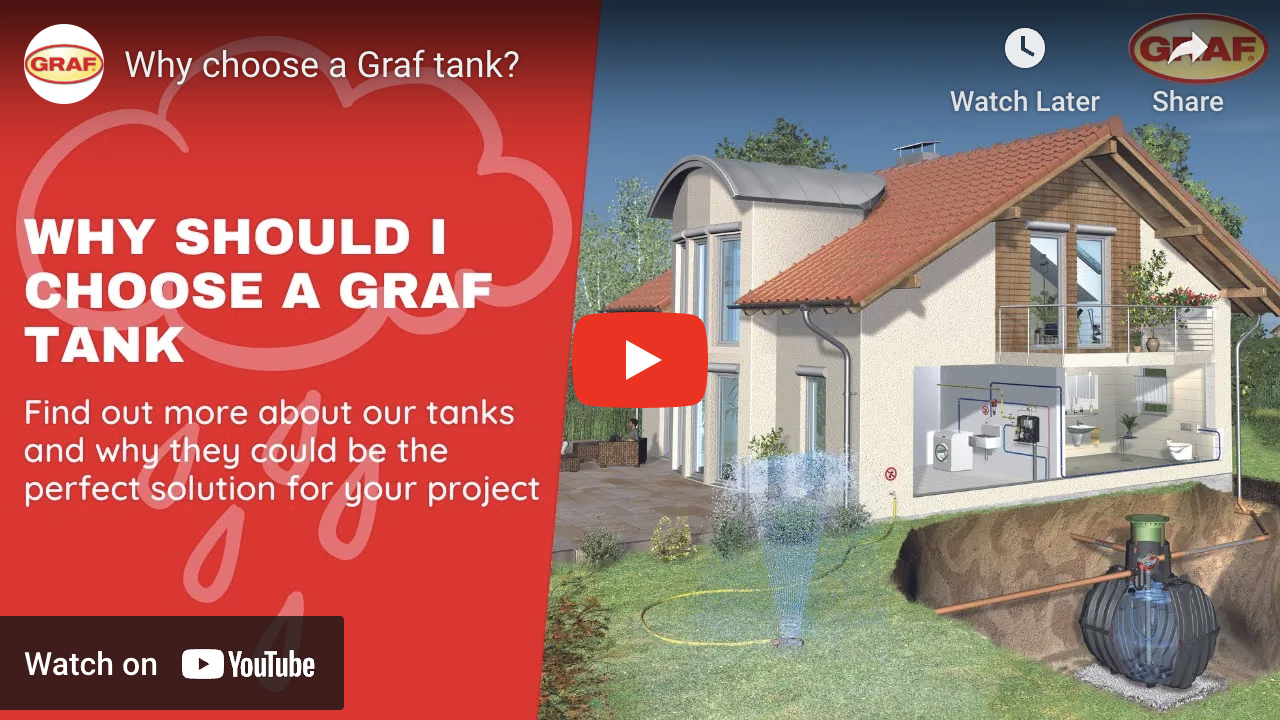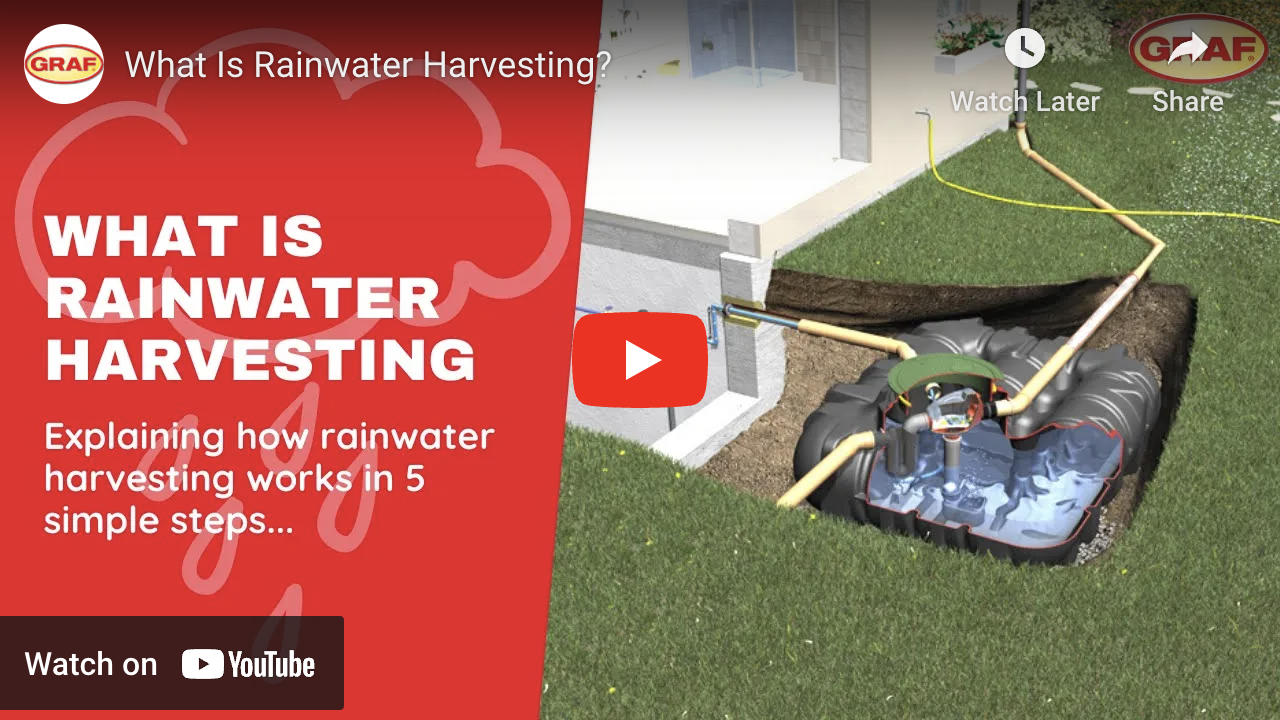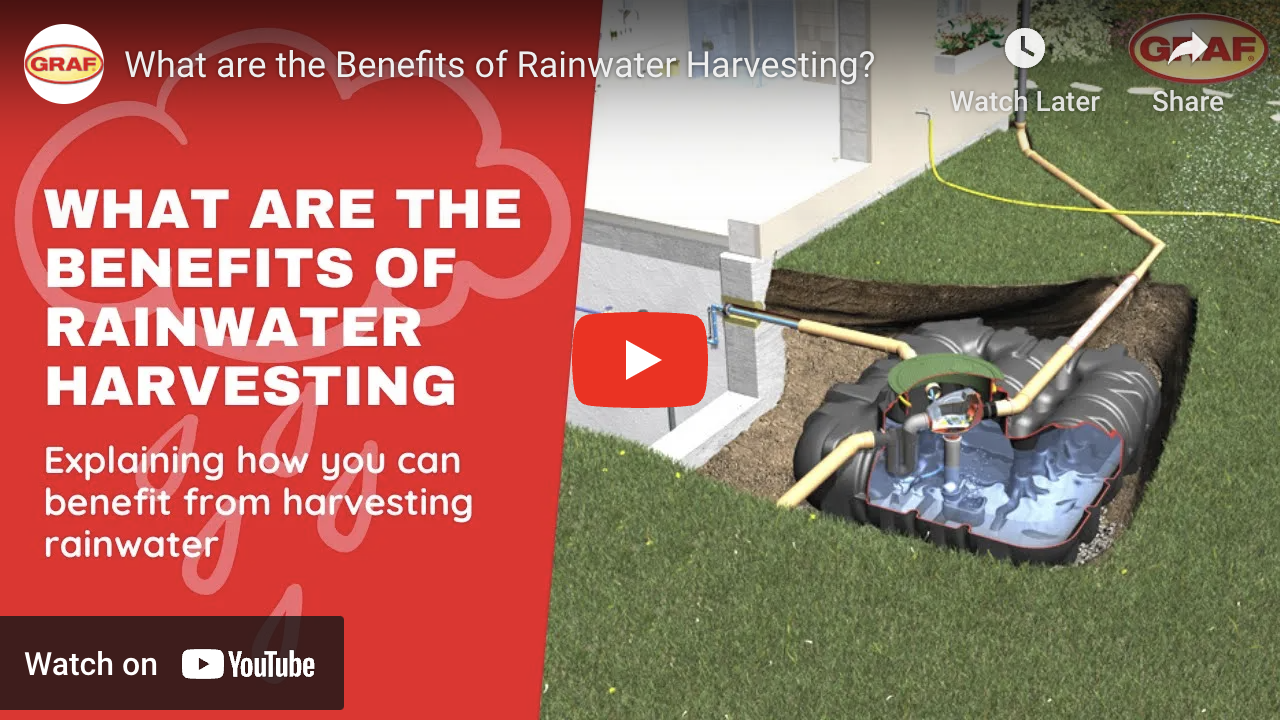Read time: 7 minutes
In a world where conserving water resources and combating climate change are paramount, the ability to harness rainwater is invaluable. But where did it all begin? Let us unravel the history of rainwater harvesting and the role Graf UK has played. From ancient techniques to innovative eco-friendly solutions, we will explore how rainwater harvesting has shaped the landscape of water conservation.
Early Origins of Rainwater Harvesting
The roots of rainwater harvesting extend deep into human history, tracing back to early civilisations that recognised the value of this sustainable practice. The Romans, renowned for their engineering prowess, constructed intricate aqueduct systems to channel rainwater and spring water into their cities. The Greeks, too, embraced rainwater harvesting, using it for everything from irrigation to replenishing their iconic public baths.
Evolution of Rainwater Harvesting Technology
As civilisations flourished and societies evolved, so too did the technology and techniques associated with rainwater harvesting. This evolution was driven by a growing understanding of the importance of water conservation and advancements in engineering and architecture.
Adapting to Changing Needs
Over the centuries, the practice of rainwater harvesting adapted to meet the changing needs of communities. In medieval Europe, for example, grand cathedrals and monasteries featured elaborate rainwater collection systems. These systems not only served the spiritual needs of the inhabitants but also showcased the innovative engineering of the time.
Innovations and Milestones
The Renaissance period saw further innovations, as architects and engineers designed sophisticated rainwater harvesting systems for palaces and estates. These systems utilised increasingly intricate networks of gutters, downspouts, and cisterns to capture and store rainwater.
As the Industrial Revolution progressed and urbanisation surged, rainwater harvesting took on new significance. Large-scale projects were undertaken to provide clean water to growing populations, and rainwater harvesting played a crucial role in these endeavours.
The Modern Era
In the modern era, technological advancements have enabled rainwater harvesting systems to become more efficient and accessible. Innovations like filtration systems, pumps, and storage tanks have made it easier for homeowners and businesses to embrace this eco-friendly practice.
The history of rainwater harvesting is a testament to humanity’s ability to adapt and innovate in the face of evolving challenges. Today, Graf UK stands as a leading provider of rainwater harvesting solutions, building upon this rich history to offer sustainable water management systems for a changing world.
Graf: A Pioneering Legacy in Rainwater Harvesting
Graf UK’s history is marked by a commitment to innovation in rainwater harvesting. This journey dates back to the founding of Otto Graf GmbH.
- 1962: Founded by Otto F. Graf and Elfriede Graf, the company initially focused on providing plastic containers and drums for various applications, including wine production and industrial usage.
- 1974: GRAF enters the world of rainwater harvesting with the market launch of the first GRAF water butts. This marked the company’s initial foray into rainwater collection, setting the stage for its future in sustainable water management.
- 1978: Building on its early success, GRAF opens up a new product segment with the introduction of plastic underground rainwater tanks. These tanks provide homeowners with a more extensive and discreet way to collect and store rainwater for various uses.
- 1997: GRAF revolutionises rainwater tank logistics with the introduction of the Herkules tank, a breakthrough in rainwater harvesting technology. The Herkules tank’s innovative design made it easier to transport and install large rainwater storage solutions, making rainwater harvesting more accessible.
- 2002: GRAF expands its rainwater harvesting product range by introducing decorative rainwater collectors. Launched this year, the column tank enhances rainwater systems aesthetically, serving both functional and decorative purposes. This innovation paves the way for more visually appealing rainwater harvesting solutions.
- 2006: To meet the growing demand for rainwater harvesting systems, GRAF invests in expanding its production capabilities. The new Teningen production site boosts GRAF’s efficient manufacturing of rainwater products, promoting wider adoption of sustainable practices.
- 2007: GRAF’s commitment to sustainability and global expansion continues with the launch of the Carat S underground tank. This tank expands GRAF’s product line and establishes its global exports, spreading rainwater harvesting to new areas.
- 2008: Sustainability remains at the forefront of GRAF’s agenda as it starts blow molding production in Teningen. This production capacity expansion enables a broader range of rainwater harvesting products, meeting the rising demand for sustainable water management.
- 2009: GRAF takes another significant step in sustainability by investing in its own raw material recycling process. By recycling raw materials, GRAF reduces its environmental footprint and aligns its practices with the principles of rainwater harvesting, which is all about conserving precious resources.
- 2014: A pivotal year for GRAF as it establishes Graf UK Ltd. Through the acquisition of SCP Water Management Ltd, GRAF expands its presence in the UK and shifts its focus from rainwater barrels to comprehensive rainwater harvesting systems. This strategic move underscores GRAF’s dedication to offering holistic rainwater harvesting solutions.
- 2022: Otto Graf GmbH celebrates its 60th anniversary, marking a significant milestone in the company’s journey. To commemorate this achievement and further strengthen its position as a leader in rainwater harvesting, GRAF opens a new factory in Neuried. This facility represents a state-of-the-art production and logistics centre, employing around 80 people. Strategically located, the new factory boosts production and aids sustainability by cutting over 2,000 truck trips annually.
Modern Applications of Rainwater Harvesting
In recent years, rainwater harvesting has emerged as a cornerstone of contemporary sustainable practices. Its versatile applications have expanded across various sectors, including residential, commercial, and industrial settings, where its environmental benefits and cost-saving potential are now widely recognised.
Residential Applications: At the residential level, rainwater harvesting has become a practical solution for homeowners seeking to reduce their environmental footprint and lower water bills. Home systems, often integrated with gutter systems and storage tanks, capture rainwater for purposes like landscape irrigation, toilet flushing, and laundry. These systems not only help conserve precious drinking water but also decrease the burden on mains water supplies.
Commercial Utilisation: Rainwater harvesting extends its reach into commercial and institutional spaces, where large-scale systems cater to diverse water needs. Buildings equipped with rainwater harvesting infrastructure can collect substantial quantities of rainwater for applications such as cooling systems, fire suppression, and restroom facilities. The financial advantages are evident, with reduced water bills and potential rebates for sustainable practices, offering incentives for businesses to adopt rainwater harvesting.
Industrial Sustainability: In the industrial sector, rainwater harvesting plays a crucial role in sustainable water management. It can support manufacturing processes, cooling systems, and even serve as a backup water source in the event of water supply disruptions. Industries are increasingly recognising the importance of minimising their environmental impact, and rainwater harvesting aligns with these objectives by conserving water and reducing the energy-intensive treatment and transportation of water.
Environmental Benefits: Rainwater harvesting’s environmental advantages are paramount. Harnessing rainwater for non-potable uses lessens freshwater resource strain, protects ecosystems, and reduces the carbon footprint from water treatment. Additionally, it mitigates urban runoff and prevents waterway pollution.
Cost Savings: Modern rainwater harvesting systems also provide substantial cost savings. Reduced water bills are an immediate benefit. Rainwater harvesting reduces the need for treated drinking water, indirectly saving energy used in water treatment and distribution.
It’s clear that rainwater harvesting has evolved from ancient traditions into a modern, eco-conscious solution. Its applications, from residential to industrial, offer both environmental benefits and cost savings. To delve deeper into the world of rainwater harvesting, why not explore our other blog articles? Each one offers valuable insights into water conservation, sustainability, and the evolving landscape of rainwater harvesting. If you’re interested in adopting rainwater harvesting solutions or have any questions, please don’t hesitate to reach out to our team for more information.



